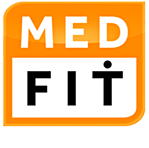Category: Uncategorized
Aging Well Evanston celebrates its 20th Year
Written on May 23, 2018 at 2:15 pm, by Robin Schuette
We’re pleased to volunteer with Aging Well Evanston. The volunteer planning committee organizes an annual educational conference for older adults in our community. This May Aging Well celebrated its 20th year, and featured keynoter Emily Rogalski, PhD., who presented her research with Super Agers.

Category: Community Relations ~ Uncategorized
Tags:
Essence of a Man: A Memoir
Written on June 22, 2015 at 11:27 am, by Robin Schuette
Ten years ago, we published a historical narrative of Brown Greene with memoirs from his four adult children. For this Father’s day, we re-issued and updated the book for the Greene family, but the story has resonance for other reasons. Creating this memoir was cathartic for John, as his dad died from a sudden heart attack when John was only 12. Although there are many wonderful traits John attributes to his parents, he also inherited heart disease. Given his professional background in wellness and as a cancer survivor in his 30s, John understood early on the benefits of daily exercise. Once he reached 50, he had his first stress test. Knowing that his father died at 56 of a heart attack, coronary care was critical for him. As a home chef focused on scratch cooking, he has been able to monitor his diet. But diet and exercise alone can’t combat our heredity. Understanding family history gives us a foundation of who we are, but looking into our family medical history gives us tools to potentially better our own health and well-being.
EssenceofaMan2015 (pdf)

Category: Health & Fitness ~ Prevention ~ Uncategorized
Tags:
Medical Fitness Trends
Written on January 30, 2014 at 11:30 am, by John P. Greene
At MedFit Partners, our assessment of market conditions affecting medical fitness centers contains both challenging news and exciting opportunities for 2014.
1. Hospital-financed projects continue an anemic growth trend. During the last 10 years, health care has been undergoing a transformation at all levels. Priorities have shifted from local to regional perspectives as providers have merged to create larger, more efficient systems. In 2009, there were 52 hospital mergers, 72 in 2010, 90 in 2011 and 105 in 2012. The goal is market share with the correct cost mix of physicians and vendors providing outpatient services. In most markets, medical real estate development becomes too expensive and competitive with other medical users to support the returns from a medical fitness center. Without a pressing mandate, it will be difficult to gain hospital executives’ attention.
2. The word wellness is everywhere, especially in major urban markets. There is an amazing range of retail options in fitness, personal services, dining, grocery and information under the wellness umbrella. New entries arrive daily providing a variety of choices and price points for the knowledgeable consumer. Messaging, multi-channel marketing, outrageous customer service and outcome reporting are especially critical today in creating demand and differentiation for the medical fitness product.
3. Collaborations and networks are critical for improving community health. The 2008 and 2013 reports from the Robert Woods Johnson Foundation, Commission to Build a Healthier America, speak to the importance of making healthcare more responsively linked into the development context of our communities. To me, this means more public and private collaborations as well as integrated fitness networks with all types of providers. Just as there are “food deserts†there are “medical fitness deserts†that need our services to improve community health. Our goal should be to substantially increase the national fitness membership demand above the 20 percent participation rate.
4. Prevention and fitness under Accountable Care Organizations (ACOs) may provide opportunities for medical fitness centers. Obamacare supports the creation of larger networks of insurers, hospitals, physicians and providers under ACOs. A limited number of trials are underway, providing medical coverage to a large group of lives paid under a bundled provider payment model. If the goal is to reduce the demand for medical services by managing chronic issues, what is a reasonable amount that could be allocated to prevention and fitness services provided by a vendor? If the average per capita medical cost in the United States is $8,601, what portion should cover wellness activities to reduce this number? This critical question needs to be answered by medical fitness center member research.
5. Orthopedic specialists and their ancillaries will continue to be major champions of medical fitness, but in smaller, more integrated settings. Driven by demographics, more active lifestyles and obesity, the demand for orthopedic services will continue at high levels, providing pre- and post- treatment opportunities. Medical fitness providers should be able to take on the role of outpatient therapy, extending patient care well beyond the typical reimbursement period.
6. Technology and its application to chronic-condition management for all age groups is a critical necessity for all fitness providers. Currently, one out of four adults has multiple chronic conditions—a focus of high-risk management strategies by ACOs. To control medical usage patterns, chronic patients will need to become more physically active under uniform, condition-based exercise guidelines applied through a software solution. Fitness providers will need to have certified personnel capable of translating and applying this technology to the specifics of the consumer and the ACO.
7. Weak economy continues to negatively impact sales and retention. The fitness industry is definitely feeling the impact of the weak economy—14 percent of adults out of work, weak consumer discretionary spending and static real estate prices. Simultaneously, there has been a dramatic increase in the supply of health clubs at all price levels. In some markets, fitness clubs are as prevalent as coffee shops. The result: consumers have a range of choices, and they are willing to try other fitness providers that have excellent staff, programming and clean facilities.
Category: Health & Fitness ~ Trends ~ Uncategorized
Tags: Community Development ~ Development Trends ~ Fitness Centers ~ Healthcare Real Estate ~ Healthclubs ~ Wellness
Prevention and Accountable Care Organizations
Written on April 26, 2011 at 11:46 am, by John P. Greene
In 2012, Medicare is scheduled to implement physician payment reforms to enhance primary care and encourage the formation of Accountable Care Organizations that will manage sizable groups of Medicare beneficiaries’ lives. These ACOs will also include hospitals with fees based upon a formula of cost reductions and quality care results. This will be quite a change from the traditional fee-for-service payment model. Once Medicare gets this ball rolling, the private insurance companies will quickly do the same.
Prevention including annual medical exams, screenings and other diagnostic tests are expected to become routine for everyone in these ACOs by 2014. What is unclear is the role of fitness, nutrition and wellness services in this business model and who is best able to provide these services and at what cost. While physicians clearly understand the benefits of fitness, nutrition and wellness services to improve their patient lives and reduce their demands on the system, current legislation fails to specify a role for this important aspect of wellbeing in the new healthcare business model.
Consumers value what they pay for and clearly the explosion of the health and fitness industry over the last two decades speaks for itself. What has not happened is the focus on improving community health through a wide-scale effort including all the major stakeholders: schools, businesses, healthcare and public institutions. If society is really going to reduce our soaring healthcare costs while improving health, prevention in all forms must be the front-line defense.
For most of my professional career, I have been involved with shaping a new direction for healthcare, which includes medical fitness and wellness as part of hospital services. During those decades, I have experienced the consolidation of healthcare through hospital mergers, physician acquisition and the rapid expansion into convenient ambulatory care centers. The medical fitness industry has continued to grow during this period.
However, for the next generation of medical fitness services to be embraced, these services will need to be:
- Covered by private health insurance and Medicare/Medicaid
- Premium reduction and tax incentives for companies that incorporate these programs into their benefit programs
In addition, there will need to be financial incentives for building ACOs and for the physicians and hospitals that participate. Today’s model is one of reimbursement for disease – not financial reward for health. Without a well-planned transition, it will be initially too costly to make this transition.
I believe that every ACO will need a network of medically affiliated fitness and wellness centers with certified and trained teams delivering the latest in exercise and nutrition science in environments that also combine rehabilitation and conditioning services. These centers will have to have a complicated business model based upon a capitated annual rate as well as market-driven ancillary businesses. They will be a lot different from the current landscape of small, local fitness clubs and the Ys based upon their complex staff mix, policies and processes, integrated communications strategies and branding. They will
Category: Trends ~ Uncategorized
Tags:



